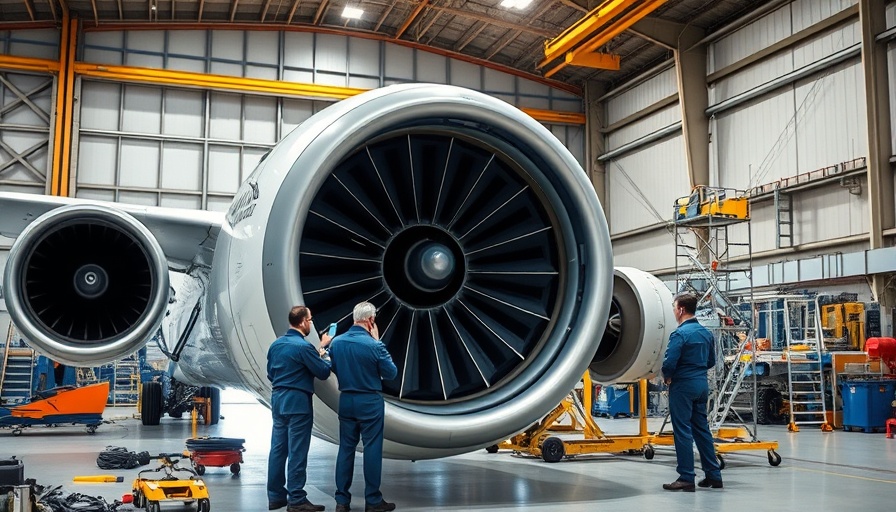
Boeing's Engine Crisis: Understanding the Recent NTSB Recommendations
The National Transportation Safety Board (NTSB) has recently called for urgent modifications to the engines of Boeing's 737 Max airplanes following alarming incidents involving smoke filling the cockpit and cabin post-bird strikes. In 2023, two separate occurrences — one in Havana, Cuba, and another in New Orleans — led to the NTSB’s recommendations after passengers and crew experienced dangerous situations where visibility was severely compromised due to smoke.
Highlights of the Safety Concern
Both incidents involved South West Airlines planes where, rather than a simple mechanical failure, the challenges stemmed from a safety feature designed to protect the engines. The feature, known as a load reduction device, activates after a bird strike or an engine malfunction. Unfortunately, it inadvertently allows oil to enter the hot engine, creating smoke that can rapidly infiltrate either the cockpit or passenger cabin, and can override control measures. This unfortunate design flaw raises pressing questions about how safety innovations can sometimes lead to unforeseen complications.
Similar Models and Broader Implications
This isn't merely an issue confined to the Boeing 737 Max alone. The same engines, manufactured by CFM International, are used in other popular models, including the Airbus A320neo and China’s C919. The NTSB has rightly pushed regulators in Europe and China to evaluate whether these other engine models also share the same vulnerability, emphasizing the wider impact of the NTSB’s findings on global aviation safety standards.
A Case of Unforeseen Consequences
Experts like John Cox, a prominent aviation safety consultant, underline the complex nature of aircraft engineering — where improvements meant to enhance safety can sometimes introduce new risks. “The device was intended to prevent potential disasters during engine failures, but it appears to have created a new predicament with smoke inhalation in the cockpit,” Cox explained. This duality of advancements serves as a reminder for aviation regulators and manufacturers to remain vigilant post-implementation.
A Proactive Industry Response
In response to the NTSB's concerns, CFM stated that it “is aligned with the NTSB's recommendations,” revealing that a software update for the 737 Max's engines is in the works. Moreover, Boeing echoed this sentiment, expressing commitment to a permanent remedy once it is identified. Efforts also involve revising pilot operating checklists to reduce risks during such emergency situations.
Regulatory Oversight for Passenger Safety
The Federal Aviation Administration (FAA) is already aligning with the NTSB's recommendations, indicating that a permanent fix will be required once a viable solution is established. This proactive approach reflects a broader recognition of the importance of integrated safety measures, ensuring that passenger safety isn't compromised in the face of mechanical issues.
Looking Towards the Future
Sustainability and safety in air travel need to go hand in hand. As manufacturers like Boeing and regulatory bodies like the FAA and NTSB navigate these intricate challenges, the goal should be to bolster both innovations and safeguards. The lessons learned from this episode could very well serve as a catalyst for further inspections, modifications, and overall safety enhancements across the aviation industry.
Statistics and Data Points: Understanding Risks
According to statistical analyses, bird strikes are responsible for only a small fraction of aviation incidents, yet they have significant implications when they occur. The FAA recorded about 14,000 bird strikes annually across U.S. civil aviation as of the latest reports, highlighting the necessity for rigorous safety measures and rapid responses by manufacturers following strikes.
Final Thoughts: Action Steps Moving Forward
The aviation community must act swiftly to address these concerns. As we navigate the complexities of technological implementations, collaborative efforts are paramount. Riding through this wave of innovation requires an active dialogue between engineers, regulators, and pilots for optimal safety. No doubt, the journey is challenging, but with concerted efforts, we can enhance safety undoubtedly.
 Add Row
Add Row  Add
Add 



Write A Comment